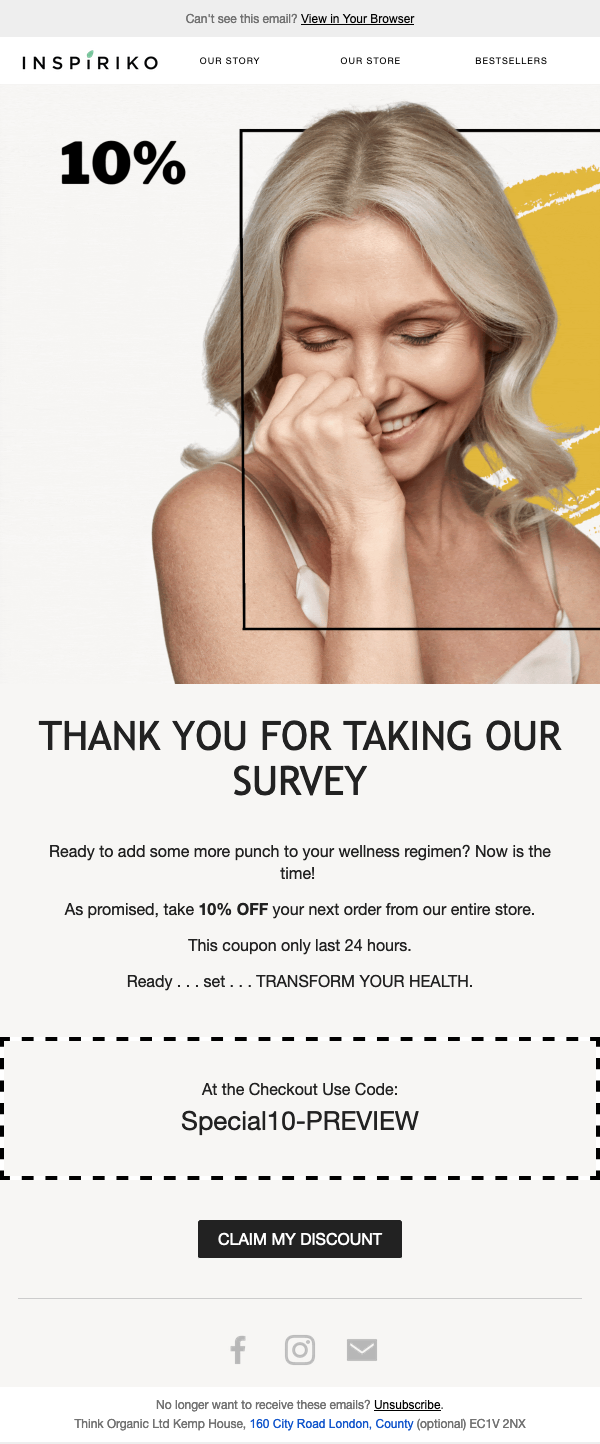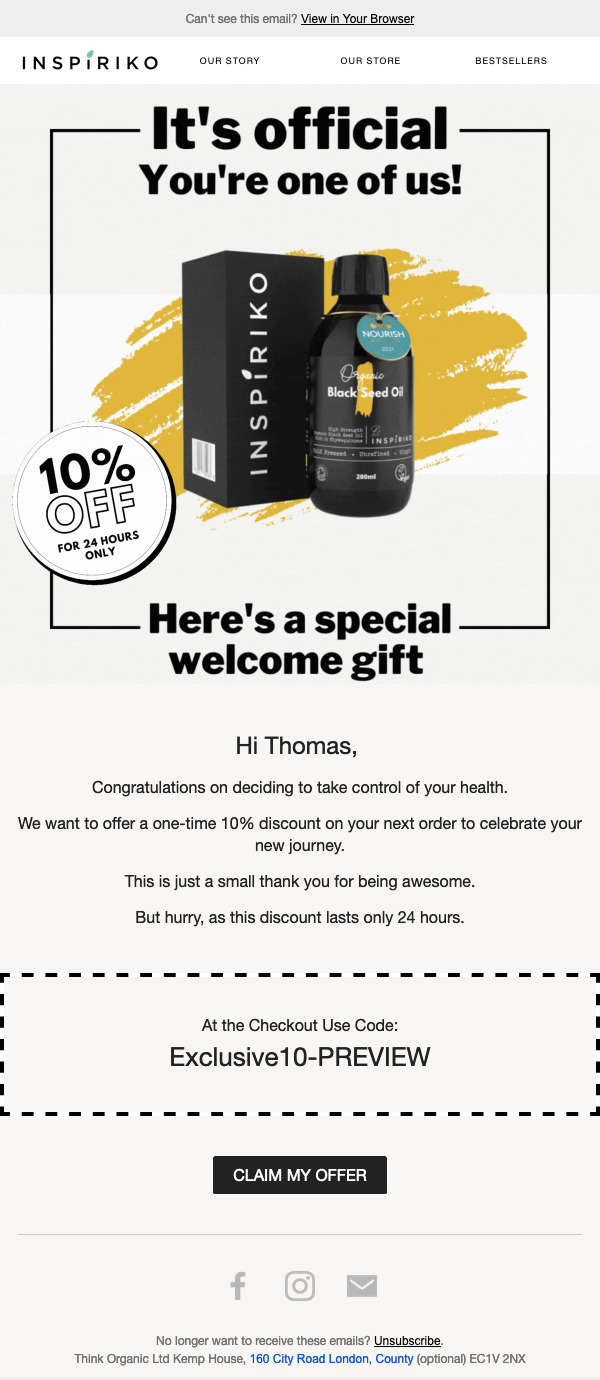Tripled Revenue Generated in 90 Days
Background
This client is based in the UK and is well-placed in the supplement niche. When we started working together, they already had some email flows with Klaviyo. However, they were not performing up to standard. Their click-through rates were abysmal and only generated around 1%- 2% of their total revenue. Their email campaigns were performing much better, but typically, in most email marketing ecosystems, flows drive in more revenue because they are triggered based on behaviour and draw better responses.
I began working on their emails in early November and optimised their email flows in December. Our objectives were to rework the acquisition so it answered the five common objections first-time buyers have when contemplating making a purchase; these were creating a connection (founder/brand story and supporting a cause), differentiating the brand from the competition with a unique value proposition, building trust with relevant social proof and transparency, reducing risk perception and encouraging impulse buying by offering hassle-free returns, money-back guarantees and free shipping, and closing first-time purchases by presenting an offer, product features, demonstrating their benefits and creating urgency. Ultimately, we achieved this by creating high-converting flows, with revenue reaching 21% of total store revenue in March.
Before working with us
90 days after we optimized their email flows
Before our implementation
Open rates were below 10%
Email flows were making 1-2% of total store revenue
After an audit, I later realised that my client wasn’t using an opt-in pop-up, and most subscribers signed up to complete a quiz. They didn’t use the results for segmentation nor recommend any products based on quiz answers
After our implementation
Open rates consistently above 20%
Email flows made up 21% of total store revenue and became more profitable than campaigns
Teaser pop-up installed on the storefront, a quiz funnel that we utilised to properly segment our list and send more personalised flows and campaigns, inevitably leading to more revenue generation
Our Impact
Before I get into the specifics of what we created for my client, I’ll first explain the three categories I use to build my flows:
Customer Acquisition
The main goal of these flows is to transfer shoppers from the “Awareness” stage to the “Purchase” stage of the customer journey. The core customer acquisition flows are Welcome Series, Browse Abandonment, and Cart Abandonment.
Customer Retention
As the name suggests, these flows aim to retain customers. Customer Retention is achieved by raising customer satisfaction, creating a feedback loop, and cross-selling or upselling products. The core customer retention flow is the New Customer flow.
Customer Advocacy
The customer advocacy flow primarily aims to turn repeat purchasers into loyal customers and, eventually, brand advocates. Brand advocates are created by identifying frequent customers and rewarding them with schemes such as a VIP or customer referral program and a points rewards system.
Email Flows: Flows are essential to every email marketing strategy. One reason flows are so powerful is that they’re triggered by customer behaviour, so when subscribers receive them, it feels natural. When constructed properly, flows guide customers through the customer lifecycle, and because they’re automated, they operate 24/7.
To further optimise the customer acquisition strategy, we reconstructed the three core acquisition flows: Welcome Series, Browse Abandonment and Cart Abandoned.
When I built out an opt-in form for my client, I created an A/B test between two different types of pop-up forms. Both pop-up versions contained a 15% discount and informed shoppers about what stage of menopause they were in, but there was a crucial difference between the two. The first one was a standard pop-up that appeared after 30 seconds of a new shopper landing on the site, and the second pop-up is my favourite type of pop-up, the teaser pop-up. Teaser pop-ups operate in the happy medium of not being too intrusive and ruining the customer experience but prevalent enough that the shopper can see them and access the offer when they are ready. After 30 days, the teaser pop-up was the clear winner, beating the standard pop-up by twice as many conversions.
Simultaneously creating the A/B-tested pop-up forms, I rebuilt their quiz to ask questions about their shoppers’ symptoms and timeframes. Based on the quiz results, we would give the subscriber their results and a “recommended regimen” of products.
These two actions alone significantly impacted acquiring new customers, making their flows highly profitable.
Segmentation
Good list segmentation is equally essential to improving open rates and customer engagement, which applies to flows and campaigns. Before working with me, my client only segmented their list when they were email subscribers their results from the quiz; everything after that was the same across the board.
I ensured that the corresponding emails in the Weclome flow remained segmented. I provided a mix of product recommendations, trust, and valuable content emails that all felt personal to the respondent. Many email marketers' first concern is how to profit from their subscribers, but I think this is a mistake. As email marketers, we aim to personalise the shopping experience for subscribers and customers; profits are a by-product.
Conclusion
This case study demonstrates the importance of using a quiz in your opt-in forms to acquire as much first-party data from your customers as possible while framing the quiz as benefiting them. And it does, as you can tell them it ensures they only receive relevant content.
Check out more email marketing case studies to discover what eCommetry can do for your business.
Are you ready to improve your retention marketing?
Click below to schedule a call and be prepared to grow your business.





